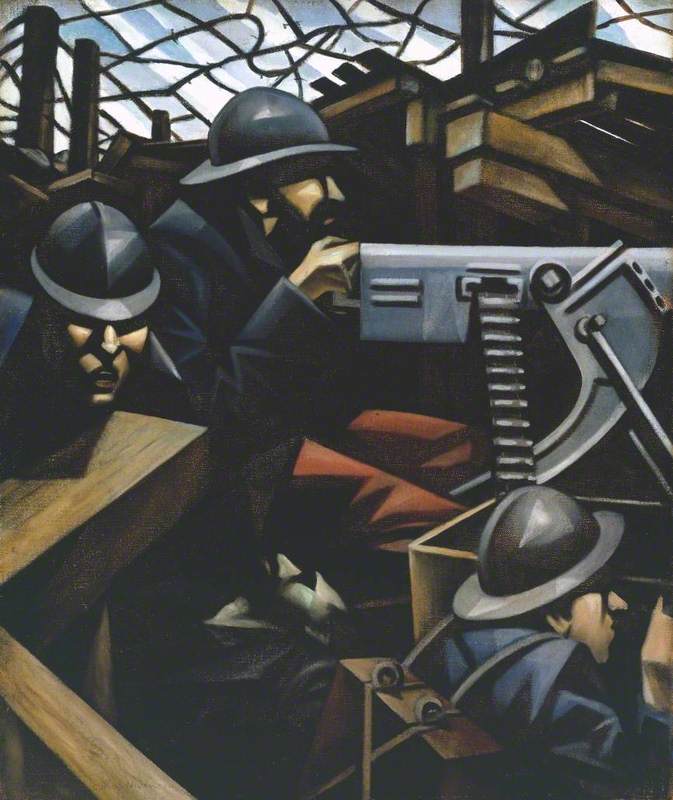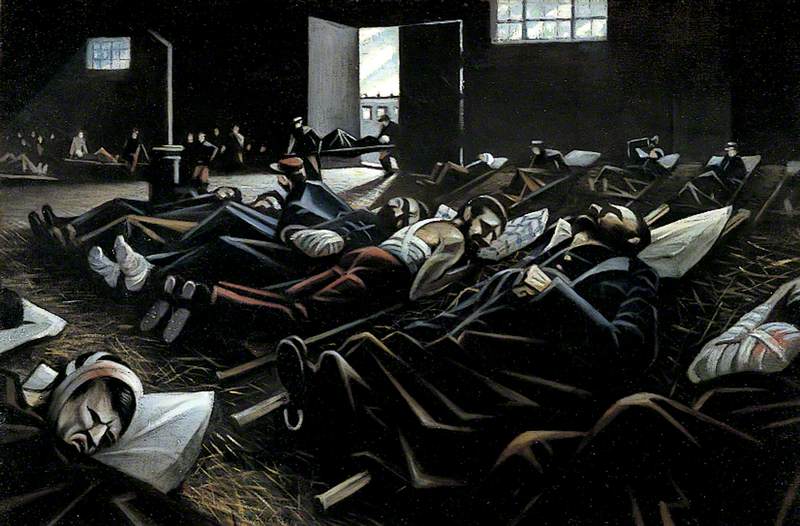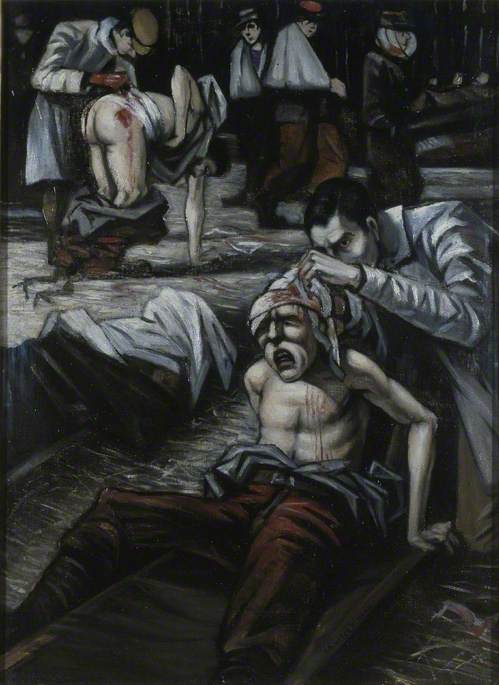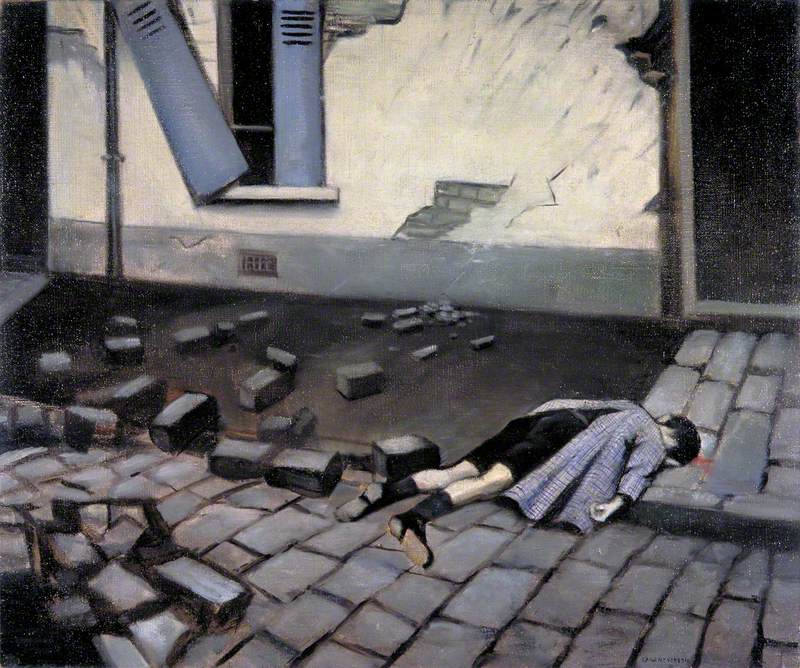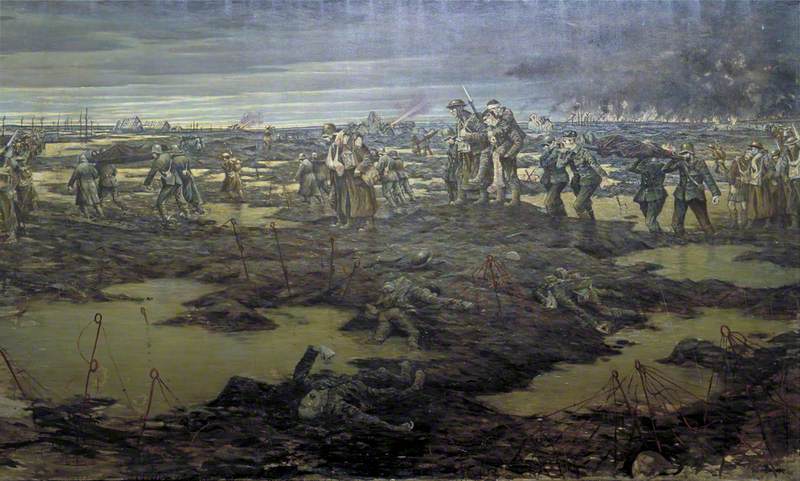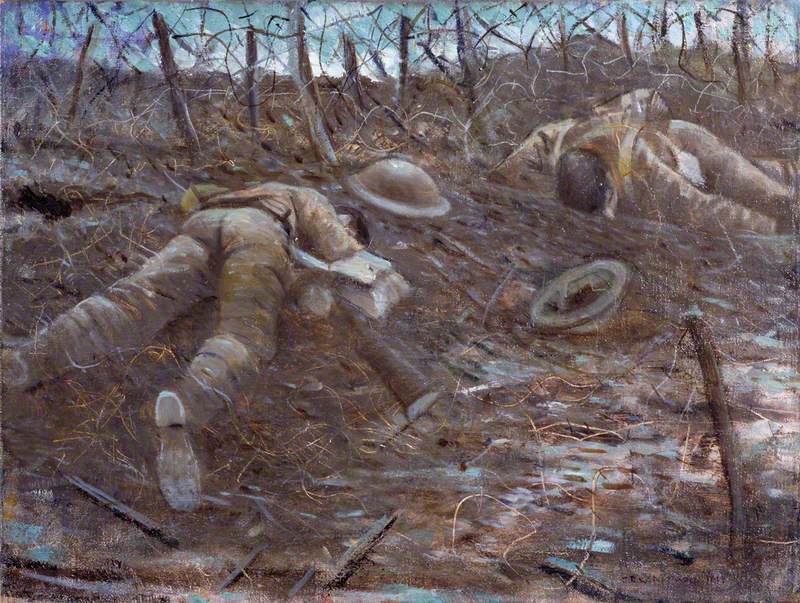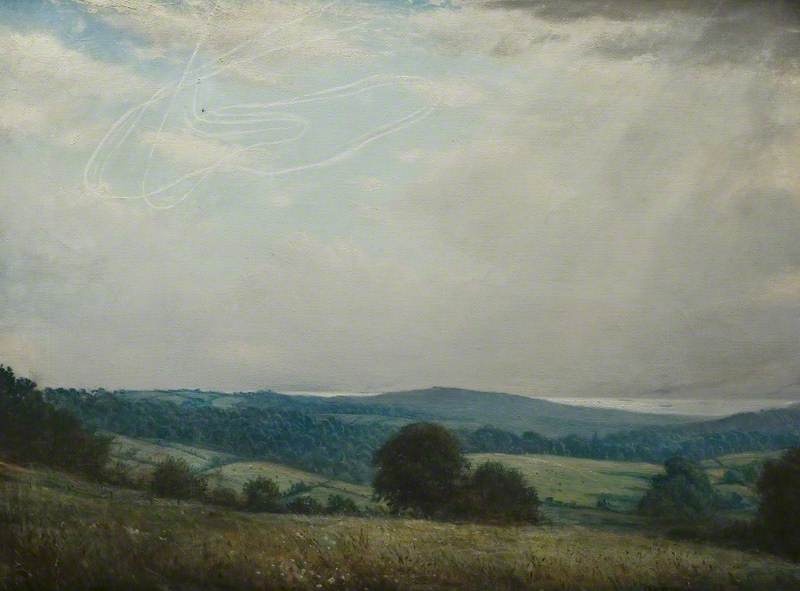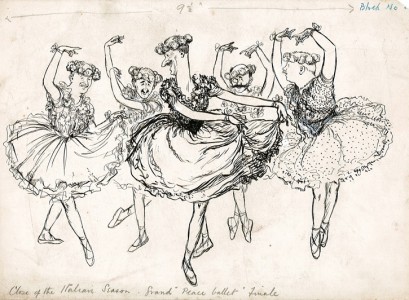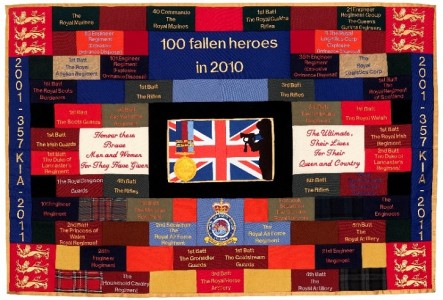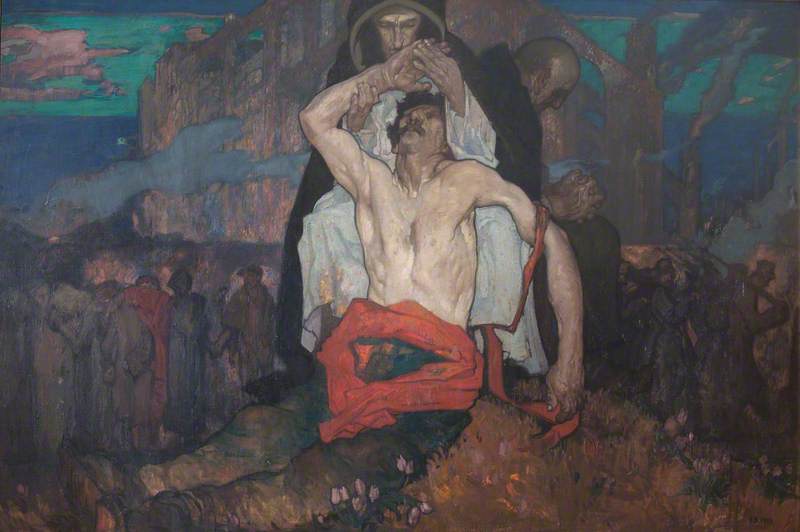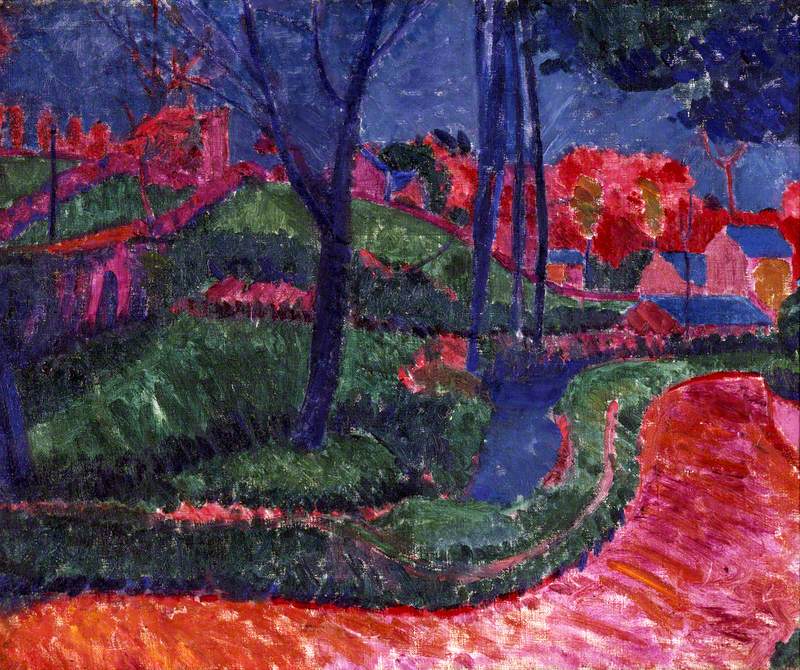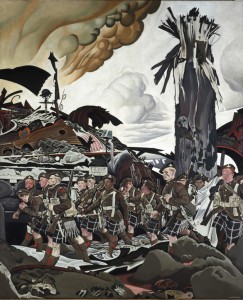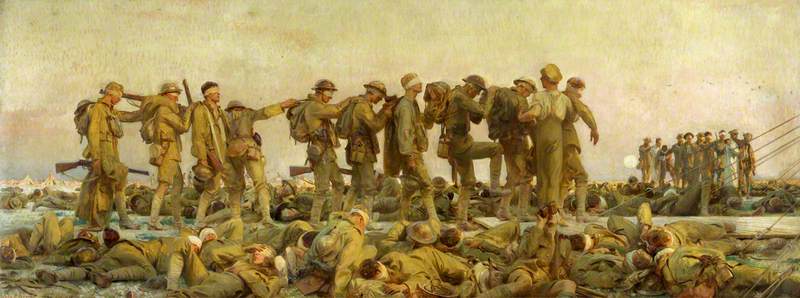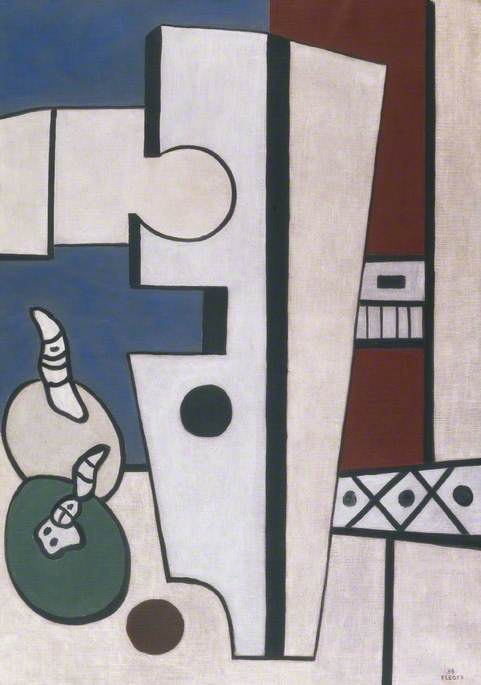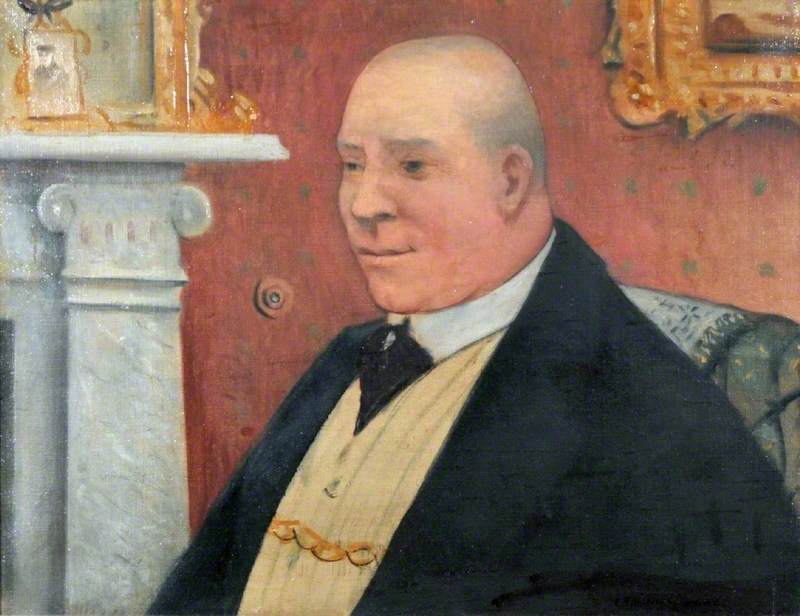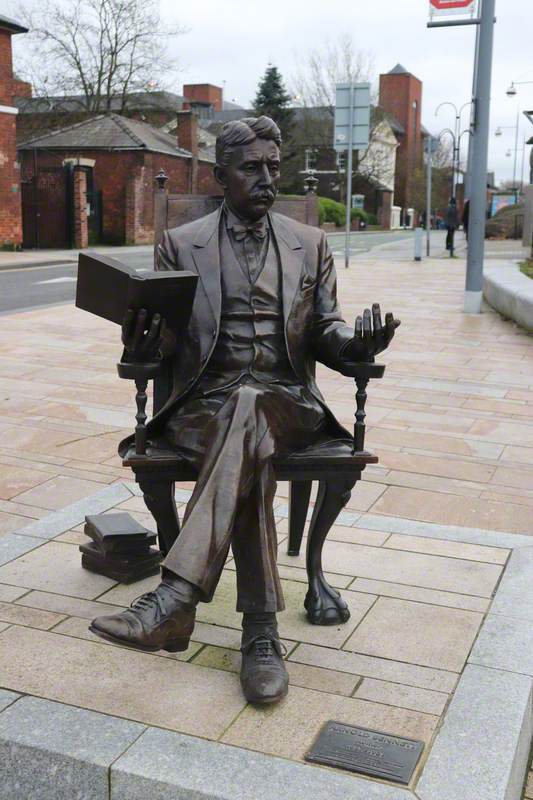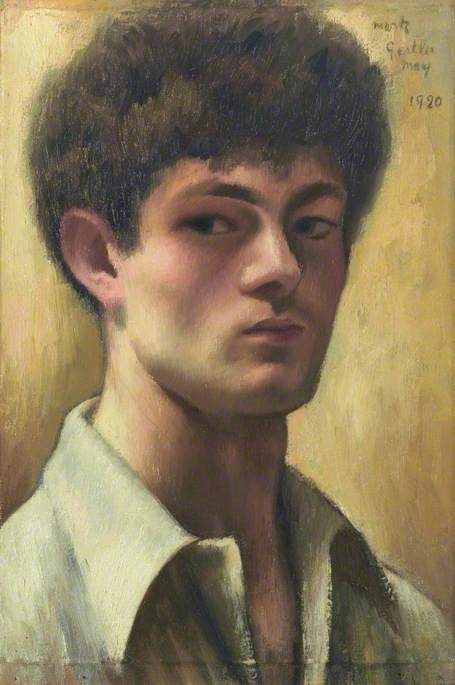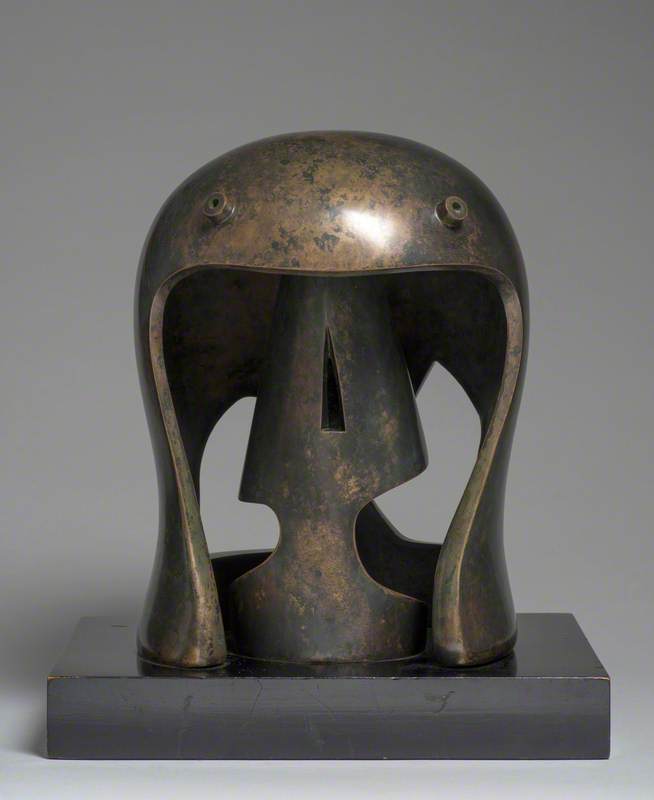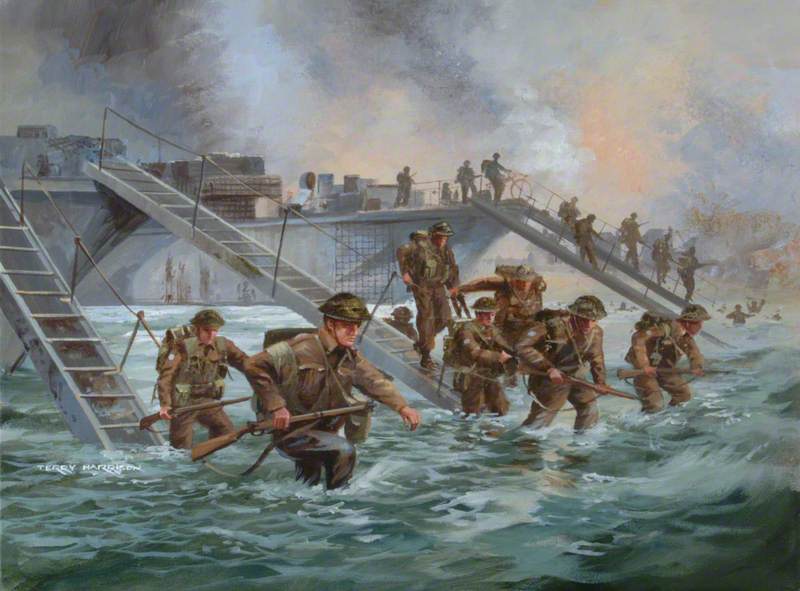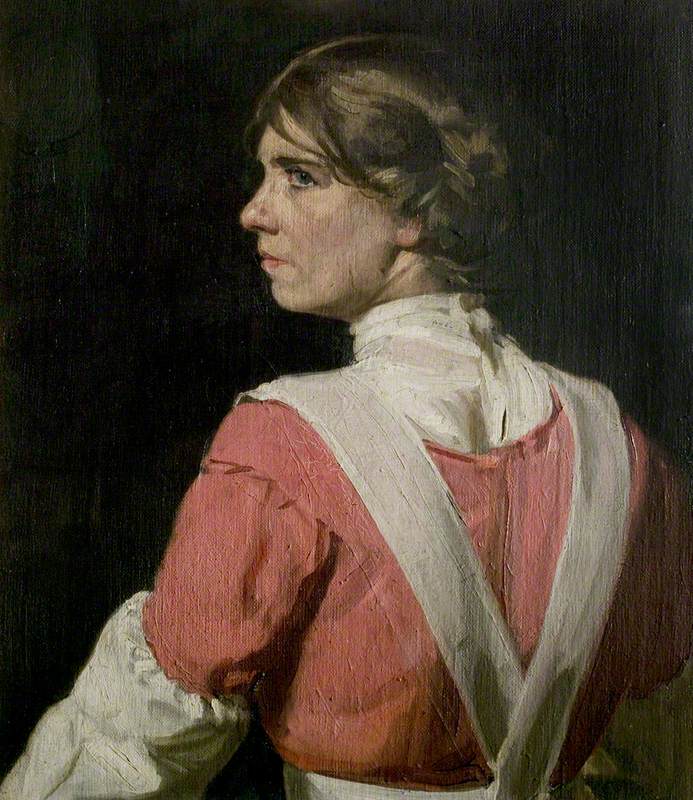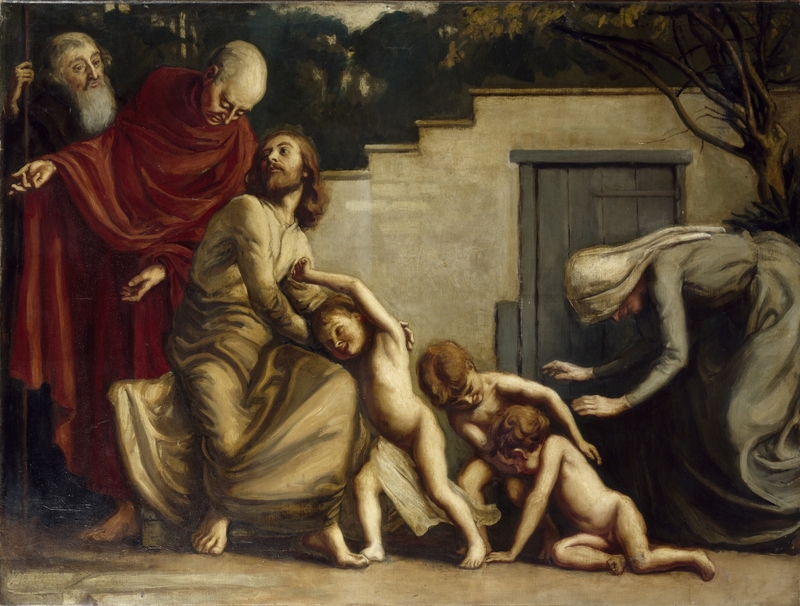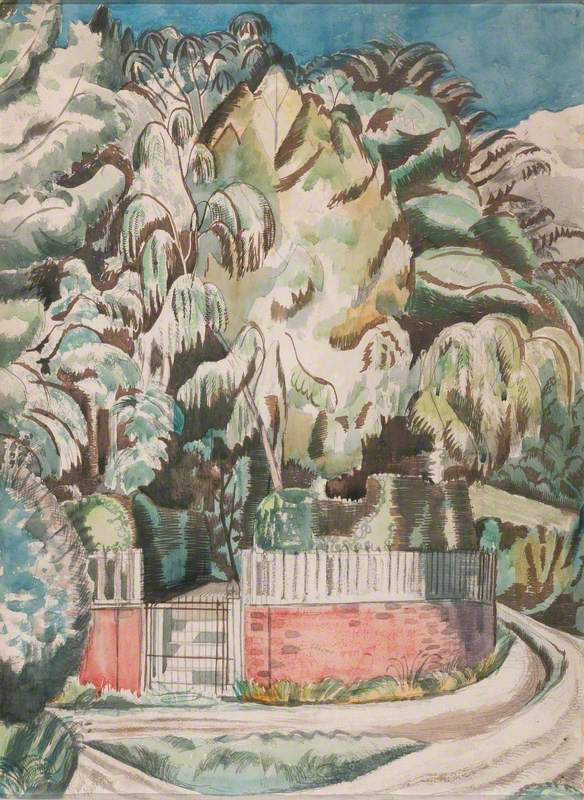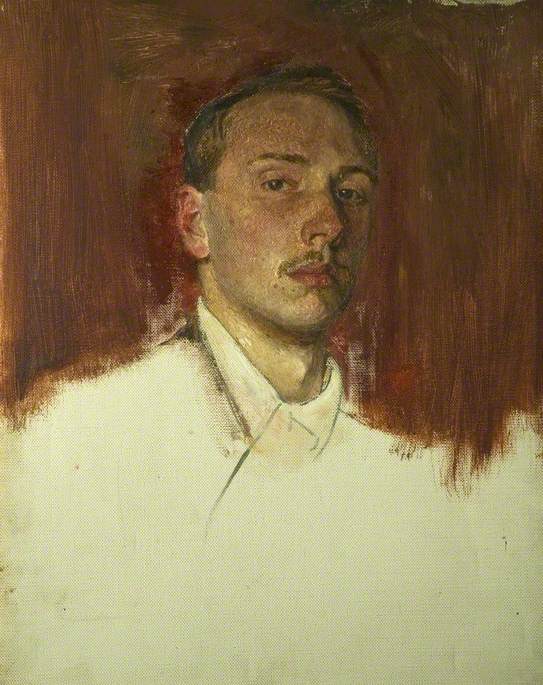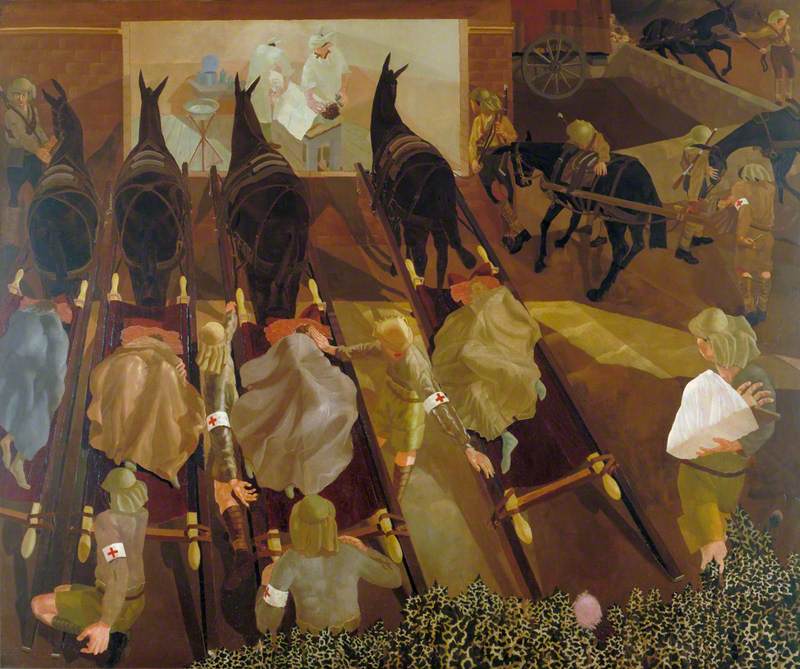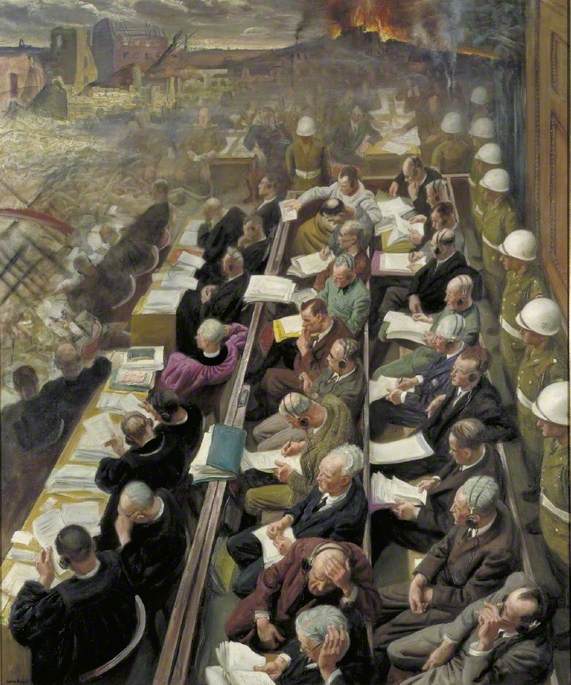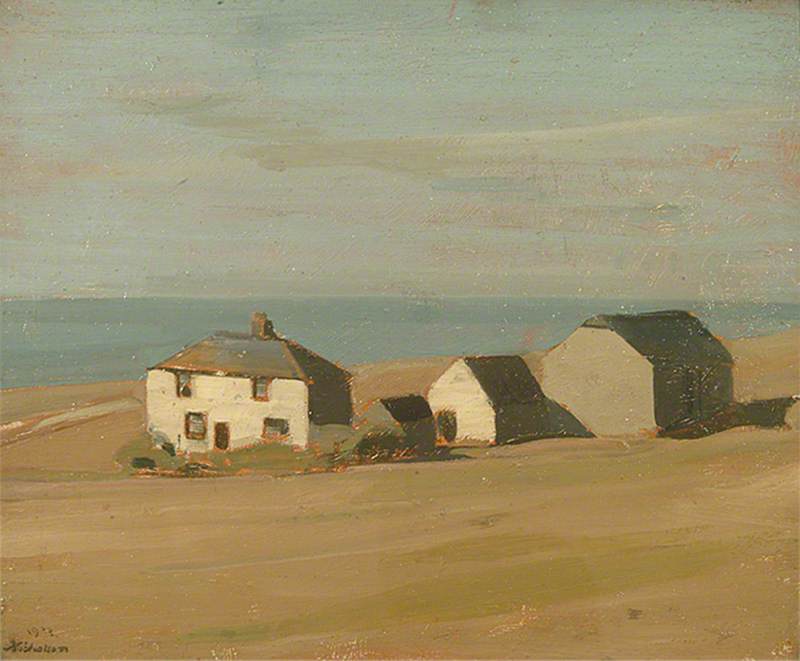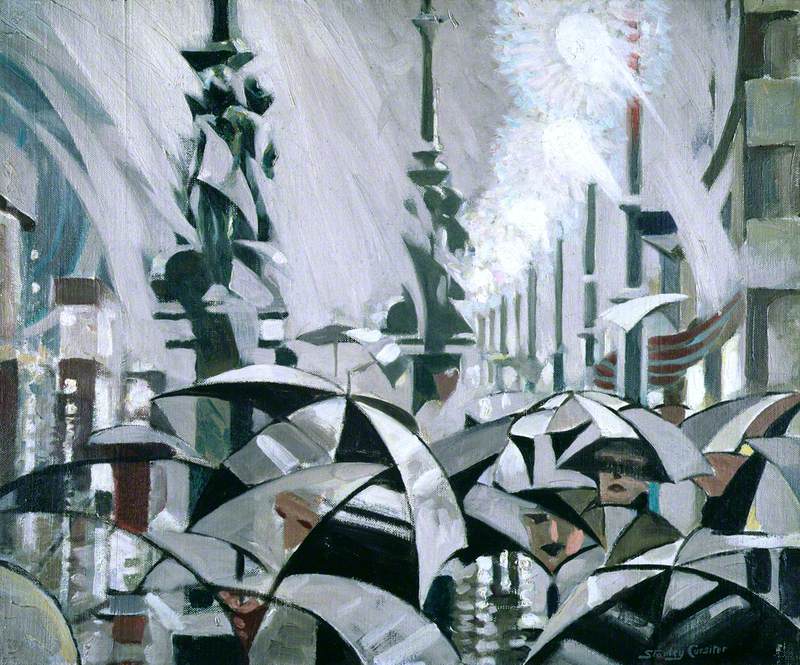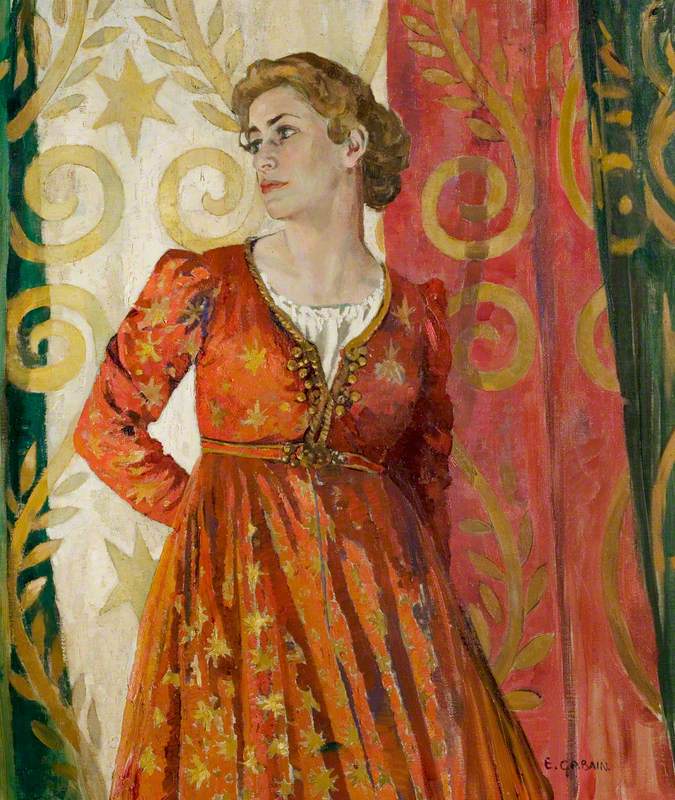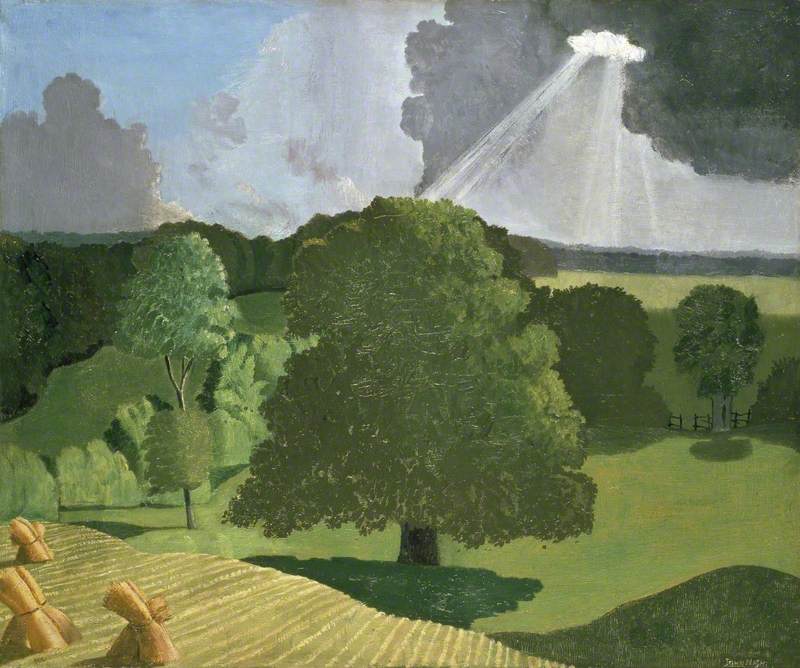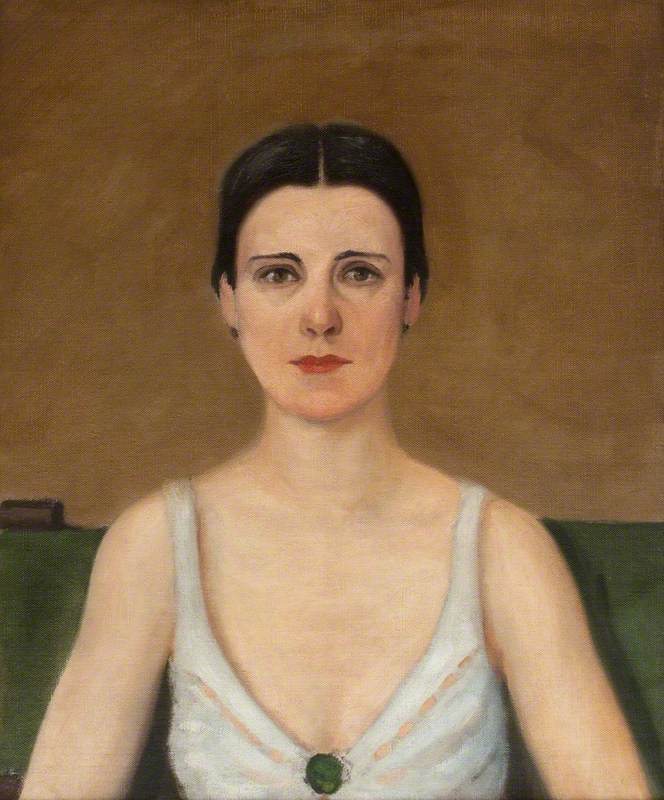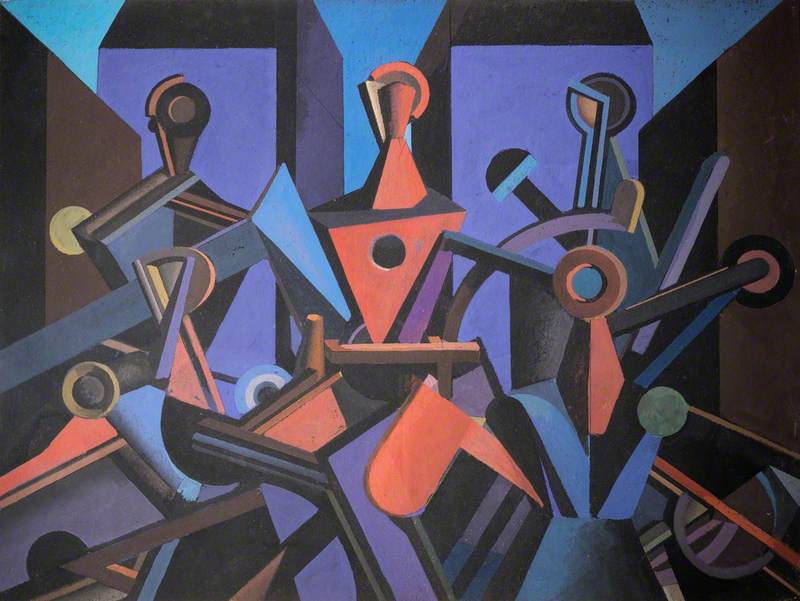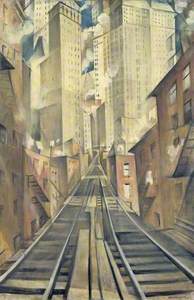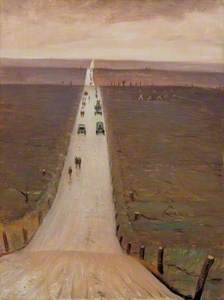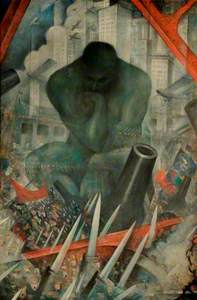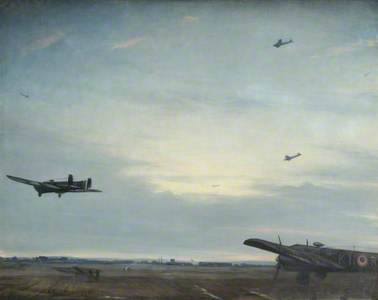Our culture venerates cleanliness. Modern homes are often minimalist: functional, monochrome and ordered. Photoshopped faces line public spaces, tempting us to buy products that will scrub us up and make us beautifully new. Think IKEA, L'Oréal. Even social dialogue shouts for societal purification. We view ourselves as necessary social heroes; decluttering acceptable opinion to fit a channelled vision for a brighter future.
C. R. W. Nevinson (1889–1946) felt a similar need to clean. At the dawn of the twentieth century, he was hailed (and, by others, hated) as Britain's predominant Futurist. Joining Marinetti and his men in a cry to 'destroy the museums' and 'set fire to the library shelves', Nevinson believed that European art needed something new. Speed and efficiency were now the aims: the machine the method to get there.
The Soul of the Soulless City ('New York - an Abstraction')
1920
Christopher Richard Wynne Nevinson (1889–1946) 
At a glance, this 1920 painting seems to encapsulate such a mindset. Initially titled New York – An Abstraction, it depicts a fictional section of Manhattan's elevated railway: a testament to man's engineering prowess. Earthy buildings block the light in the foreground and cast the tracks into shadow, hemming us in. These low roofs seem aged and dirty.
Meanwhile, a strong arrow of blurred slats intersects the scene. We appear to be moving at speed, away from the darkness and naivety of the past toward glittering ivory skyscrapers ahead. These dominate the sky space: man's achievement superseding all else.
Or so the painting might seem.
A closer look at Art UK's collection of Nevinson's work challenges such a reading. Type his name into the search bar and you'll find a range of art from across his career. If we examine this chronologically and in context, the meaning behind New York – An Abstraction provides an insight into his artistic motivation throughout his life.
Though Nevinson was doubtless drunk on Futurist ideals before 1914, the First World War challenged his sympathies. For a movement which named war as 'the world's only hygiene', this should have been a triumphal step in the right direction in the eyes of the Futurists. Finally, here was an opportunity to rid the world of anachronistic attitudes and shock it into rebuilding afresh.
However, it was Nevinson's turn to be shaken. As an ambulance driver on the Western Front, he witnessed the brutal atrocity of war behind its glorious image. What of man and the machine? La Mitrailleuse blurs the line between the two. That blessed combination was not what Nevinson had dreamed of.
La patrie, The Doctor and A Taube show us what he saw: pain, humiliation and slaughter.
His modernist approach to depicting the violence had been received with great praise. Yet after being appointed an official war artist in 1917, Nevinson dissatisfied his patrons by moving to the grotesquely realistic style.
In the place of his initial modernism came a bluntly representational technique – such was the demand of the ruin before him.
Following the war, Nevinson again dabbled with the excitement of modernity. It was at this time, after a trip to the city in 1919, that he painted New York – An Abstraction.
The Road from Arras to Bapaume
1917
Christopher Richard Wynne Nevinson (1889–1946) 
The strong central line is reminiscent of his earlier work The Road from Arras to Bapaume, but rather than desolation, Nevinson here suggests the possibility of growth. America: a nation free from war and faced with a booming economy. A place where the machine can be used for progress rather than destruction, where his initial Futurist ideas for the development of man have the potential of being realised.
However, when his second exhibition in New York received a poor reception from the press, Nevinson's favour shifted. Angered at his rejection, he rechristened the work Soul of the Soulless City. In doing so, he makes a bitter claim.
Here is the soul of New York, not in people (for indeed, the work is void of human life), but in art, in progress, in speed, movement and grand modernity. The machine is no longer the magnificent solution it seemed for the development of mankind, but the means to eliminate the necessity for man at the centre of life. Though the move may seem a little melodramatic, another look at Nevinson's wider career brings it a poignancy.
Throughout his life, Nevinson was consistently frustrated by mankind's faults. During his Futurist period, he imagined the destruction of old humanity – with all of its shortcomings – in the hope of pressing forward toward (what he saw as) a cleaner, better age. His idealistic vision provided an escape from the mess surrounding him, and a means to rectify it.
Then the First World War brought him to a head-on confrontation with man's destructive capabilities. In the long term, this cemented him firmly in a desire to distance himself from such pain. Though occasionally a politically motivated work like Twentieth Century (1932–1935) pushes Nevinson's dissatisfaction with man more obviously to the fore, the large body of his work post-First World War is comprised of naturalistic landscapes and cityscapes. As with the emptiness of Soul of the Soulless City, this demonstrates a kind of escapism.
Nevinson again touched on the subject of war with the outbreak of the Second World War in 1939, but these paintings lacked any considerable success. As a result, he fled once more to landscape and industrial scenes: a welcome break from man.
Whitley Bomber: Dawn Return
1940
Christopher Richard Wynne Nevinson (1889–1946) 
Nevinson became gradually more disillusioned with the character of his kind and culture.
And who could blame him? A clichéd and well-mourned concept, we all wish humanity was better than it is. But perhaps the root of Nevinson's recurrent discouragement lay in what he valued and expected. The utter cleanliness, efficiency, unity and social affirmation he demanded were an unachievable dream, far from the reality of the human soul he experienced.
Despite all our attempts to 'clean up' as a culture, they're still far from the reality we experience today too. Pivotally, however, our lifestyle makes soullessness an increasingly tangible option. Unlike Nevinson, we don't have to paint to avoid the brokenness around us. Carefully orchestrated online interaction, consumer culture and ever-present media all evidence the same search for solace in a move away from true, raw humanity.
Nevinson's oscillation between escapism and engagement challenges us. We too have to decide between safe isolation (even just as temporary reprieve) and uncomfortable human interaction.
We're left to question alongside him how might we live – and live most fulfilled – in a painful reality. Should we try to opt out of it, or choose to opt in?
Felicity MacKenzie, 2018 Write on Art finalist
